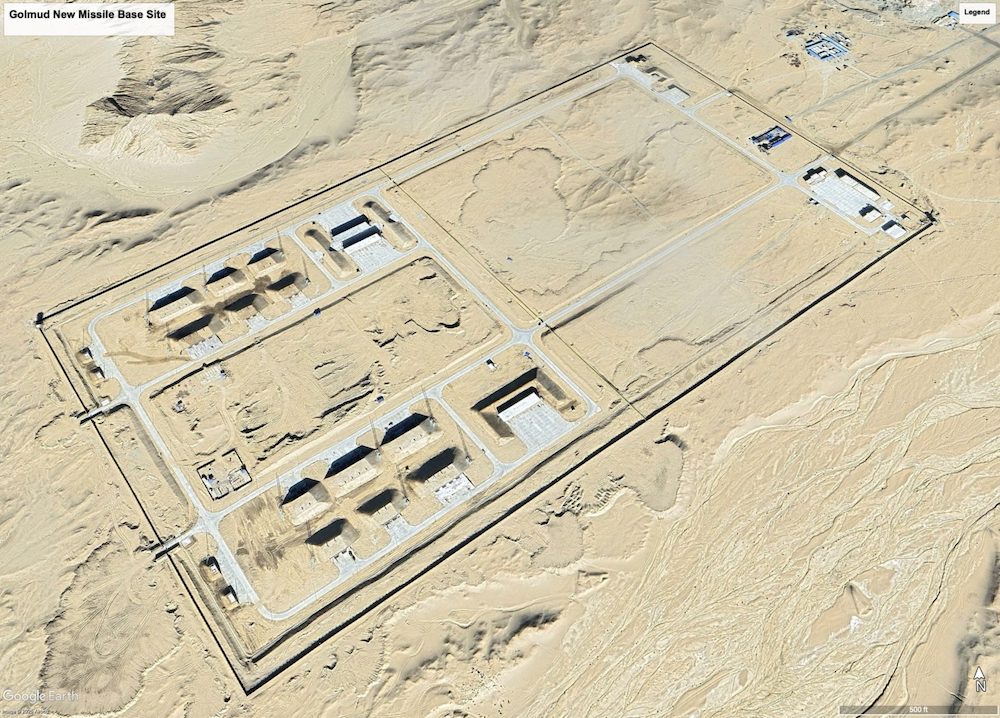Tenzin Nyidon
DHARAMSHALA, Oct. 23: New satellite imagery and open-source analysis reveal large-scale construction near Golmud in the Tibetan Autonomous Prefecture of Qinghai Province, pointing to an expansion of China’s People’s Liberation Army Rocket Force (PLARF) and its long-range missile capabilities.
According to The Diplomat, the new facilities include multiple launch pads, high-bay garages likely designed for transporter-erector-launchers (TELs), and various support structures, indicating the formation of a new missile brigade under PLARF Base 64. Situated on the high-altitude Qinghai-Tibet Plateau, Golmud’s strategic position enables the rapid deployment of missiles across western China and potentially far beyond.
The expansion appears to mark the latest phase of China’s ongoing effort to strengthen its nuclear and conventional deterrent posture. Since the 2021 discovery of large missile silo fields in Gansu and Inner Mongolia, Beijing has accelerated its modernization of the Rocket Force. The Pentagon’s 2024 assessment projected that China could amass 1,000 nuclear warheads by 2030, supported by new intercontinental and intermediate-range missile systems like the DF-26 and DF-27. Analysts suggest that Golmud’s new base may host the DF-26, a dual-capable missile with a range of up to 4,000 km and possibly newer variants under development.
Satellite data from late 2024 show rapid infrastructure build-up, including multiple prepared launch pads connected by desert roads, a configuration typical of road-mobile missile brigades that prioritize survivability and mobility. The facilities mirror layouts seen at other PLARF bases, supporting assessments that the Golmud site could accommodate a full missile brigade. Experts believe the complex will eventually host 24 to 36 launchers, consistent with modern PLARF brigades.
Field training and live-fire exercises in the Golmud region during 2024–2025 further confirm the PLARF’s operational activity there. Reports from local government sources mention Rocket Force units conducting extended training deployments, while Taiwan’s Ministry of National Defense noted missile drills in Qinghai among other western provinces. These developments suggest that the new unit is nearing readiness, potentially as a high-altitude brigade optimized for western operations.
Experts warn that the Golmud expansion has far-reaching strategic implications. From Qinghai, DF-26 missiles could target key Indian military and logistical nodes, as well as U.S. assets across the western Pacific and Indian Ocean. The DF-26’s dual-capable (nuclear and conventional) configuration complicates escalation control, particularly in crises along the China-India border or during Taiwan contingencies.
The establishment of a new brigade in Golmud emphasises China’s drive to fortify its deterrence network in western China under Base 64. By extending its missile reach toward India, the Indian Ocean, and the U.S. Pacific presence, Beijing enhances its strategic flexibility while heightening regional instability. The Golmud base, positioned beyond Taiwan’s missile range, strengthens China’s capacity for sustained deterrence and rapid response, a development that will weigh heavily on defense planners in New Delhi, Taipei, and Washington alike.









